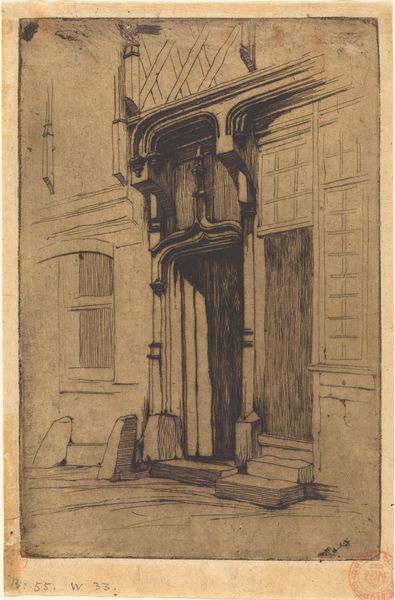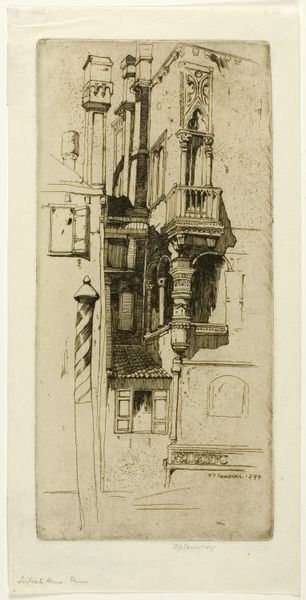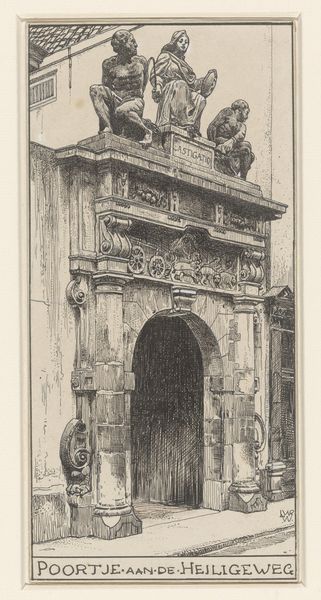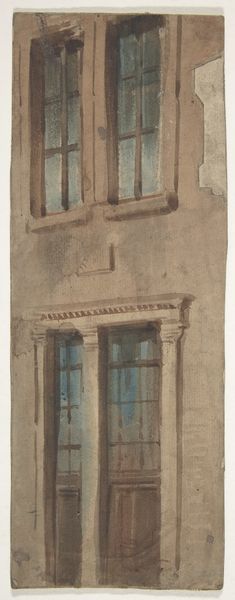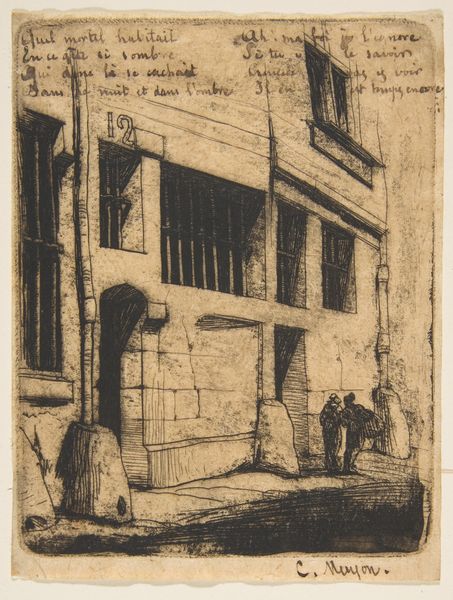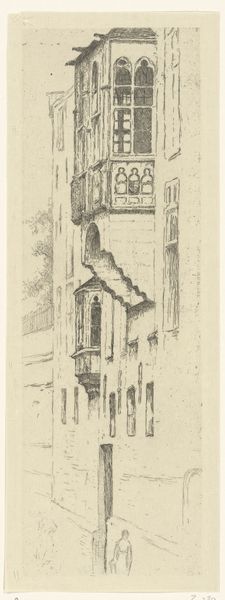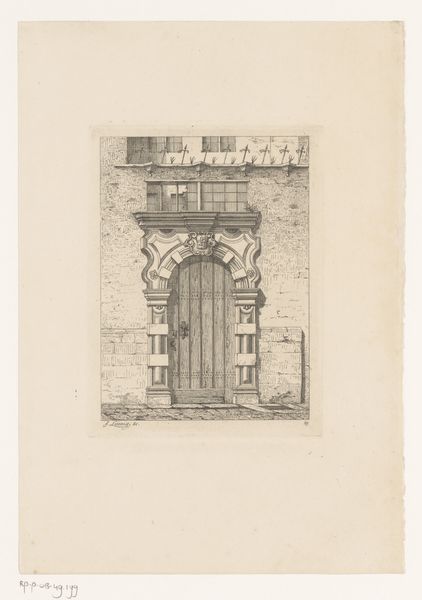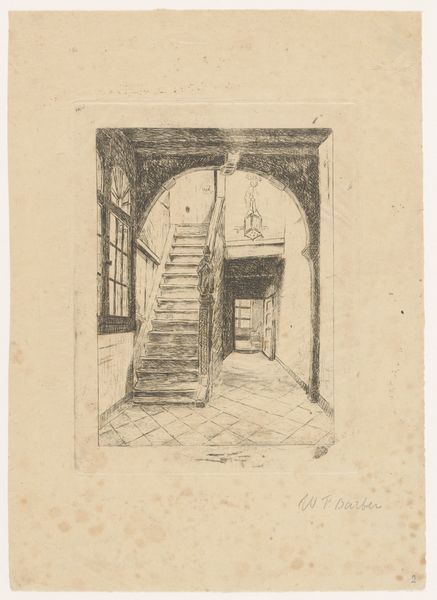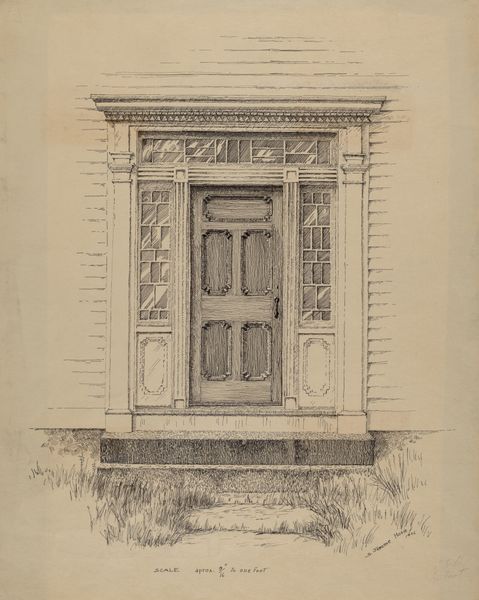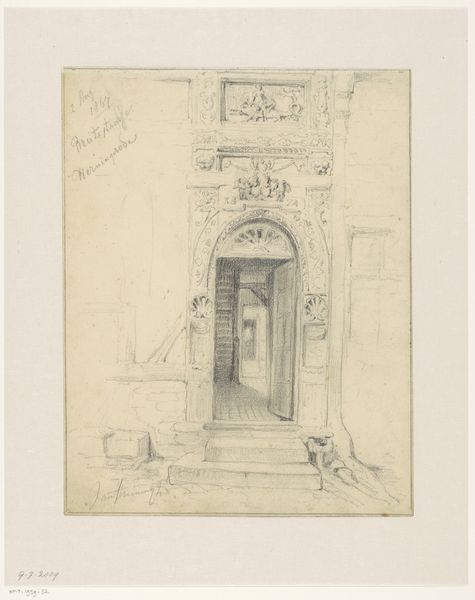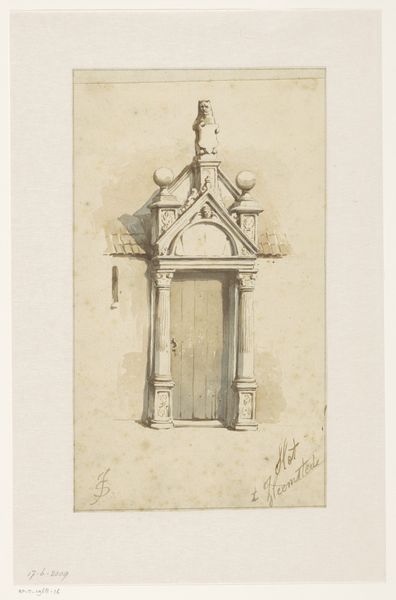
Doorway of an Ancient Convent, in the rue Mirabeau, Bourges 1851
0:00
0:00
Dimensions: 168 × 111 mm (image); 168 × 111 mm (plate); 184 × 126 mm (sheet)
Copyright: Public Domain
Curator: Looking at Charles Meryon’s etching from 1851, "Doorway of an Ancient Convent, in the rue Mirabeau, Bourges", currently residing at The Art Institute of Chicago… what strikes you immediately? Editor: It’s got this ghostly, melancholic vibe. Like a memory fading away. The stark lines create such sharp shadows, it’s almost theatrical, don’t you think? Curator: Absolutely. Meryon had a real fascination with urban decay and historical architecture. It’s interesting, isn't it? That Romantic impulse, looking back to the Medieval, finding beauty even in disintegration. Bourges itself had strong ties to French history and the church. Editor: Bourges… yes, during the Middle Ages it was actually the capital of France for a hot minute. Anyway, what about the gendered aspects of this convent’s history? These spaces, intended for women... Meryon perhaps unconsciously shows them in his etching in a state of collapse and being subsumed back into nature. Or, I suppose, into the modernizing cityscape of his time. What was his mindset then? Curator: A rather dark one. Meryon suffered from mental illness and his personal struggles definitely bled into his work. The etching itself is so incredibly detailed, but then there are these almost dreamlike, ambiguous elements, like that hanging shape in the upper-left. It teases you; it can't resolve itself! Editor: Yes, look closer! It's also not simply representational, is it? There's almost a hyper-realism about the stonework juxtaposed with more sketch-like renderings of the wooden structures that are integrated. Curator: He captures so much about that period of French history, with urbanization constantly at odds with older ways. Plus, Meryon had a particular approach to etching – obsessively reworking his plates, sometimes adding figures or details later on to imbue political or social commentary. So, this tranquil, somewhat eerie image likely had a layered intent. Editor: It really begs the question: what were those intentions? Can art, even a static cityscape, affect the world? I'd argue, of course, it can. Look at the doorway: a charged threshold not just between the interior and exterior, but perhaps past and future as well. Curator: Indeed! Thresholds fascinate me because they symbolize opportunities and possibilities, which are definitely at play here. Thanks for bringing those dimensions to the doorway, and to our listening audience. Editor: It has been a real pleasure. Until our next critical encounter!
Comments
No comments
Be the first to comment and join the conversation on the ultimate creative platform.
